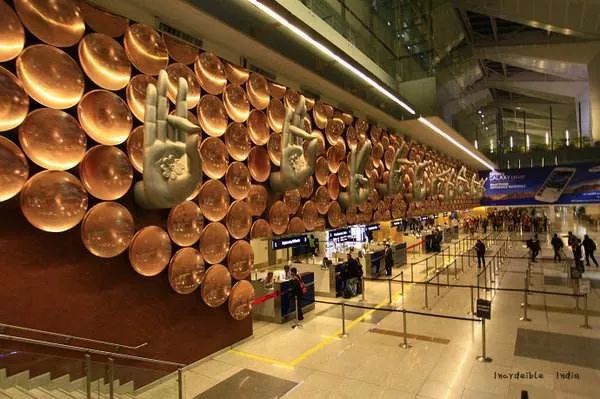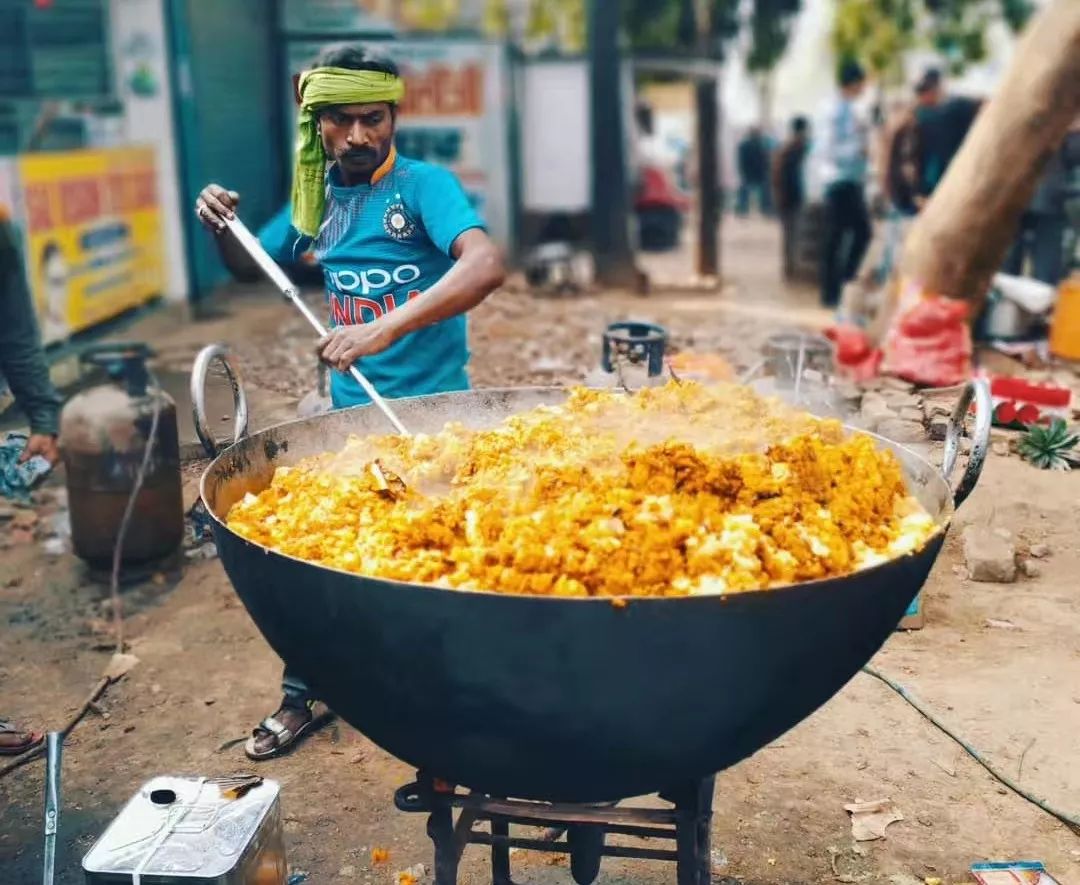It is not only the products themselves, but also the first-line practitioners with distinctive Internet industry characteristics that carry the working mechanisms of the big factory genes. Working experience in big factories, let them go to overseas with full arms, create the “India big factory employees” training plan from scratch with the same concept.
Editor’s note: This article comes from WeChat public account “Hedgehog Commune” (ID: ciweigongshe) < / a>, author Shen Danyang, editor Shi Can. Reprinted with permission.
Jian An is going to India, but her parents do n’t agree.
Mom said, “It’s too dangerous, let’s not do it.”
Dad said, “That place is not suitable for little girls.”
Jian An once worked for a large Internet company in China. Once, I was suddenly notified of the transfer and needed to switch from the North American product line to the Indian product line. Dozens more people were notified with her.
This transfer is based on the needs of the product line, and it is within the scope of the company. It is similar to the period of war, in which the superiors deployed troops uniformly and quickly entered the war according to the needs of the front. Jane’s immediate superiors gave them a similar order: travel to India, quickly integrate into the Indian team, and mingle with the Indians.

Indian smartphone users have surged, creating a great environment for content to go abroad
Photo Source: Interviewee Chen Yu
Established a branch in India to recruit local talents on a large scale, the R & D team is in China, and the front-line operations team is overseas to grab the Indian market share in the shortest time. This has become one of the main goals and strategies of domestic Internet makers.
In 2017, many domestic companies took advantage of a round of policy dividends to accelerate their deployment in developing countries such as Southeast Asia. A year later, India became their main battlefield. In 2019, they have just completed their initial exploration and experience accumulation.
Liu Ruo went to India in early 2019. She is a colleague of Jane An. Before going, she was at the company. “India is terrible. Social news often reports that there are frequent sexual assaults, male power is prevalent, and even international female tourists are brutally killed.”
Her words are filled with fear, anxiety, and doubt,Even prejudice. But this is not to blame her, her knowledge of India is also limited to various pieces of information provided by media channels.
Landing India
The company arranged a schedule for business trips. Soon, Jian An, Liu Ruo, and several female colleagues received instructions from Beijing for a business trip to New Delhi, India.
The company’s visa application efficiency is very high. Only 3 working days after submitting the information, Jane An got a new visa document. Booking airline tickets and hotels from company partners is faster and can be done in ten minutes.
Before they responded, they set off for a flight to New Delhi, India. Four days had passed since they were instructed, and 13 hours later, they would get rid of the cold weather in Beijing.
The moment the heat wave came out of the cabin, Jane felt that she had walked into the steaming room, and her facial features became dull to the outside world. On the way to the terminal to pick up luggage, the airport broadcasts Bollywood-style cheerful dance music, and ads on the walls on both sides of the passage are advertised by unnamed Indian stars. .

New Delhi Airport
Source: Incredible India
Jian An and a few colleagues are coming to India for the first time, and they are constantly watching this fresh world with curiosity.
The moment we walked out of the airport, the world in front of us changed again. The taxi solicitation area is extremely chaotic. Private cars, taxis, and black cars of various “factions” are crowded together. A group of locals shuttle among the passengers and try to solicit passengers with strong accents in English.
Jian’an and his party were worried about their safety and were afraid to follow the Indians at will, trying to use Uber to take a taxi. The map shows that the nearby traffic is very congested and the calling car is delayed to reach.
Going around, they found a very humble Ticket Office (ticket office) and successfully called a small taxi.
Jane’s carrying the suitcase and her colleagues walked to the taxi. I didn’t expect a small, dark-skinned Indian man to come out halfway. He came to help Jane to get the suitcase. , But this man is moving in the other direction.
In anxiety, Jane An shouted for the taxi driver. After a brief negotiation with the man in Hindi, the driver retrieved the suitcase. Then the driver explained to Jane An that the manSons are also soliciting, this is their usual way.
Jan An is not scared.
There is a distance from the airport to the center of New Delhi. They huddled in a small taxi for nearly an hour, and finally arrived at the hotel at 1 a.m. India time, which was 23 a.m. Beijing time.
The company is very generous with its employees who travel to India. Not only is the travel subsidy considerable, but also the five-star hotels in New Delhi.
However, things that made them panic quickly appeared.
Just waking up the next day, Jane An found that the company ’s overseas public relations department sent an urgent notice to everyone who sent India: the conflict between India and Pakistan escalated. All colleagues on business trips were requested to keep in touch and pay attention to their safety.
According to reference information, the conflict between India and Pakistan escalated in the Kashmir region, and a fierce air battle broke out on February 27, 2019. During that time, an experienced old colleague instructed Jane and his party to hide their identities appropriately if anyone asked when they went out.
This unfamiliar country on the South Asian subcontinent needs a lot to adapt to.
Everyone who travels to India for business travels in the same hotel, which is convenient for commuting together. On the day of the conflict, Jane and her colleagues gathered in the hotel lobby to set off. She unexpectedly noticed that the female colleagues were dressed in a consistent way: wearing a peaked cap, a face mask on their face, a large masculine T-shirt and jeans, Clearly pigmented. This is quite different from the white-collar white-collar workers in Beijing’s beautiful city.
She is one of them.
At this time, she suddenly realized that 70% of the people who were dispatched to India on business by the Internet giants were women.
Most of these girls were born between 1990 and 1997. They have studied abroad in Europe, the United States, and Australia. In the early days after joining the factory, they served British, American, German, French, Italian and other maritime products; the potential of maritime products in India exploded. On the occasion of being promoted to the company’s international high-quality market, he was transferred to become a front-line overseas operator to realize the company’s latest blueprint.
They often commute between New Delhi and Beijing, and live a “two-city life” that is difficult for ordinary people to understand. They cannot go out after work, eat their favorite food, and meet people they want.
India branch office is established in New Delhi’s CBD. Here are the Indian branches of many international companies including KPMG, Deloitte, PwC, Deutsche Bank and many more. Skyscrapers are full of modern facilities and are no different from many international first-tier cities.

Night scene of New Delhi CBD Park
But such a scene also only appears in the CBD.
After work, Jane and her colleagues head back to the hotel. Along the way, the scene outside the window changes as if travelling through time and space, from modern cities to urban and rural towns, to the desolation as far as the eye can see, many Indians live in tents draped in the streets.
This changes, but it takes 20 minutes.
Most of the overseas Indian operators live a “hotel-company” two-to-one life. After work, company and chat with each other are one of the few pastimes.
Of course, not everyone is as timid as living in India. There are also people who feel love and hope in this enthusiastic and unrestrained land.
Living into India
“I have always believed in one sentence: Only when my eyelids are close to the ground can we see the grass roots.” Chen Yu is a practice school and does not like to sit in the office.
He is from Jiangxi and has entered the tech giants Transsion and Gionee. He graduated in 2015 and started to do market research in Africa. His footprints include Nigeria, East Bailey, Kenya in West Africa, Morocco, and Egypt in North Africa. During that time, he also traveled to the Middle East and South America.
After traveling to more than 20 countries, he set his sights on India in 2016.
“India is a super value-for-money market. I paid close attention to it at the end of 2015 and began to reside there in 2016. However, I did not take into account the Internet enthusiasm that emerged after India at that time, and it was more my own cross-cultural Interest in things. “After spending nearly four years in India, Chen Yu walked frequently in India’s cities and countryside.

Indians cooking on the street
Image source: provided by interviewee Chen Yu
He is a witness of the times and has witnessed a sea change in India in recent years.
On November 8, 2016, Indian Prime Minister Modi announced a bill to discard banknotes across the country, causing a national sensation. According to the instructions of the Ministry of Finance, from November 11 to December 30, banks can deposit the abolished currency. Once the season passes, paper money will become waste paper.
There are long queues at the gates of banks across India. Chen Yu doesn’t work early, but every time